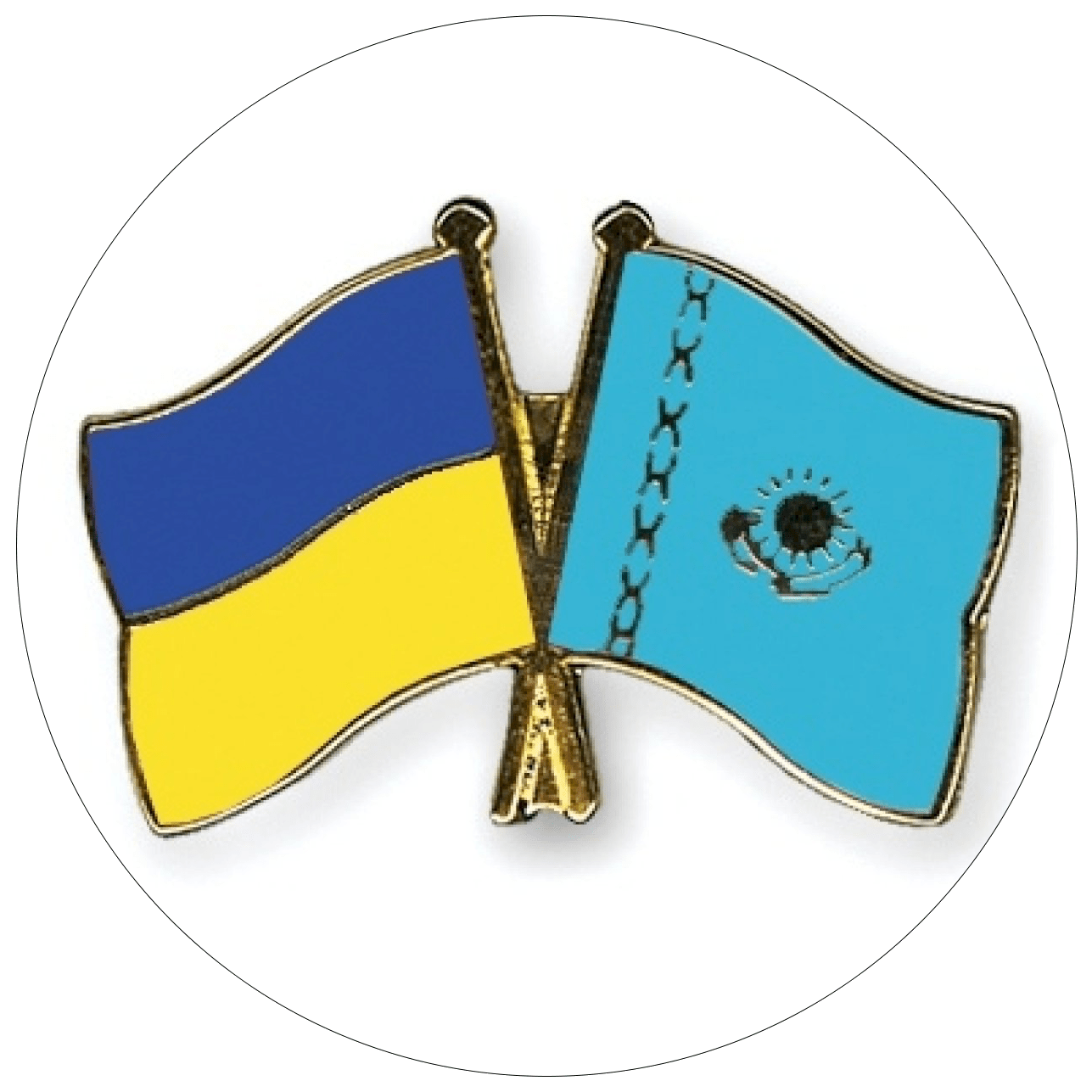EU Ambassador to Kazakhstan: Our interests in Central Asia are serious and we are in it for the long haul
EU Ambassador to Kazakhstan Alješka Simkic spoke in an interview with exclusive.kz about the changes in EU-Kazakhstan relations moving forward and where the promised investments will go.
– Central Asia has garnered significant international attention in the past two years, marked by numerous high-level visits from the European Union. This heightened interest, especially in Kazakhstan and Uzbekistan, marks a shift from the comparatively limited engagement of the preceding decade. Recent high-profile visits, including those of Mr. Macron and the German Chancellor, alongside the significant European Union-Central Asia Summit in Samarkand, represent the culmination of this change. This shift in engagement prompts the question: what are the key outcomes from your point of view that could be drawn from this important summit?
– The dynamics of the relationship between Central Asia and the European Union, and other entities, have really increased. Several factors contribute to this, notably the previous reliance on a single, comfortable source of energy and transport route, which may have led to a degree of neglect towards Central Asia’s development. However, recent events, including the war in Ukraine and the COVID-19 pandemic, have highlighted the necessity for alternative routes. Consequently, the European Union’s attention has considerably shifted towards Central Asia. This is evidenced by a significant increase in European visits to Kazakhstan in the past 20 months compared to the preceding 20 years, as well as the highly significant Summit in Uzbekistan. This summit, the first of its kind with the participation of both the President of the European Council and the President of the European Commission alongside the five Central Asian presidents in a single venue, marks a notable achievement.
The strengthening of ties between the European Union and Central Asian states to a Strategic Partnership marks a significant political achievement. While the practical aspects of the partnership might not appear drastically different, the elevation to a strategic level underscores the increased value placed on political cooperation. Notably, all five Central Asian nations are collaboratively pursuing a shared agenda with the EU. This unified approach, despite potential differences in openness among the states, highlights the mutual benefits derived from this cooperation, representing a crucial region-to-region dynamic. Many collaborative projects span borders and involve multiple states. The EU has proposed a comprehensive transport system upgrade and pledged substantial investment in Central Asia’s transport infrastructure. Other cooperative areas include trade, climate initiatives, and further investments, all outlined in joint declarations and resulting in numerous positive projects.
Samarkand declaration includes a lot of elements. It includes a map of our planned activities for the coming years, reflecting our past achievements. I hope the second summit occurs in two years as agreed.
– One of the announcements done during the summit was about this big 12 billion euro investment in Central Asian infrastructure. Are any specific projects already where they will go?
The funding discussed is not a pre-set amount to be distributed for specific sectors like transport or to individual countries. It’s project-driven and functions as an investment, not simply a transfer of funds. The capital will be sourced from the EBRD, EIB and other entities through various means, including potential grants but primarily loans and private investments. The estimated figures are a broad reflection of expenditures from the past three years and anticipated spending over the next four years based on national development plans.
Transport, digital infrastructure, climate adaptation and critical raw materials are important areas among others identified for investment. While transport infrastructure takes the biggest share, digital infrastructure currently represents the smallest investment in millions, but in my personal view it is highly impactful. Critical raw materials, particularly, likely hold the most long-term significance. The European Union has identified 18 of its 34 crucial critical materials within Kazakhstan. However, their exploration is still in the initial stages.
We know there are safety risks and we are up against some tough competition. We are ready to explore, including geology and whether the projects are even feasible, including from the environmental and societal aspects. Climate change and energy are big deals, and we are really interested in how our company can help.
– Central Asia is an important area with global environmental impact, exemplified by the near disappearance of the Aral Sea and the similar challenges now facing the Caspian Sea. At the same time, the Caspian Sea holds significant importance for developing connecting infrastructure between Europe and Central Asia and this might be challenging to unite with possible environmental risks. How do you view this problem?
– We understand the gravity of this issue and its possible dangers. Given the Aral Sea catastrophe, I am certain that the littoral states whose trade and transportation are significantly impacted by the Caspian Sea are particularly aware of this.
The EBRD has significant experience in supporting environmentally sound ports and developing high-quality transport infrastructure, as demonstrated by the proactive and eco-friendly solutions at the ports of Aqtau and Kuryk. The World Bank is also actively engaged in related initiatives.
Moreover, considerable work is being done to identify the current factors contributing to the Caspian Sea’s reduced depth.
We are definitely examining this issue and, as the World Bank has advanced on this the most so far, we will carefully review their report. This is pertinent not only to environmental concerns regarding the Caspian, but also to the extraction of critical raw materials, which carries a significant risk of environmental damage.
What we think we have is comparative advantage to other potential investors is that we will look always and sustainability of our projects and its impact on the people.
We are not just after short-term wins; we are about creating lasting good, like jobs, better infrastructure, and protecting the environment. Sustainability, including independent checks, is a key part of how we assess projects.
– Building a gas pipeline under the Caspian Sea is a big deal for energy and transport in Europe. Even though we know where the sea’s borders are, getting the green light from all the countries around it for an underwater pipeline is a must, especially for Kazakhstan and Turkmenistan to move their energy.
We’ve just made a deal for a pipeline to South Asia, which is great, but we still need to look into every option to sell more energy.
Given the European Union’s move away from Russian gas and its continued high gas demand, the question arises: Is the EU considering increased gas supplies from Central Asia as a replacement for Russian gas, and is it contemplating the construction of a gas pipeline connecting Central Asia and Europe?
– The idea to build a pipeline has been there for more than decade. Various energy companies and international consortiums have expressed interest to build the pipeline under the Caspian sea, largely driven by the desire to access and transport the significant natural gas reserves of Turkmenistan.
There were two challenges then – one that all littoral states had to give permission to build the pipeline and there was a risk that at least one of them could say “no” to such a project. That’s why it bears political risks. Second – China became a major player in Turkmenistan’s gas export strategy. China has built a gas pipeline from Turkmenistan, but because of how this deal is structured financially, I presume a big bulk of Turkmen gas revenues goes to reimburse the construction of this pipeline lowering the leftover cash. That’s why, despite the benefits of the Chinese pipeline, Turkmenistan retains a strong interest in developing other export routes for its gas for additional revenue
Naturally Europe is one of the attractive possibilities here and given the latest situation the project has come into sight again. But from my point of view it could become problematic to find an investor to the project and here is why. Oil and gas are still important for Europe but the continent is strongly driven by the “green” agenda. The projects like pipelines are not done in short time and with both Kazakhstan and European Uniuon declaring their carbon-neutral ambition by 2060 and 2050 respectively, I see difficulty finding investors.
Again you are right saying that Europe now needs gas and oil which is not from Russia, and here today we are importing a lot of oil from Kazakhstan and LNG from the US which is indeed expensive, but given the green agenda and trends, I see a low appetite for investments in gas or oil pipeline projects from Central Asian region to Europe.
– Yes this trend perhaps is evidenced by another project announced during German Chancellor Scholz last year visit to Kazakhstan to produce “green hydrogen” in West Kazakhstan. The sheer amount of investment is breathtaking 50 billion euros. Another European “green” energy project which has been long on the agenda was CASA-1000 presuming to build a 1,400 km long electric grid line from Kyrgyzstan and Tajikistan to energy hungry South Asia. The project was halted because of the wars, but the latest Taliban government is demonstrating it provides necessary internal stability to possibly revive this project. How do you view this possibility that Europe could develop this project which could unlock another two cash-hungry states of Central Asia (Kyrgyzstan and Tajikistan) developing their export potential and considering that already few countries (China, Russia, KAzakhstan and Uzbekistan) are close to recognise new government in Afghanistan?
– Since the re-establishment of the notorious Taliban rule in Afghanistan, Europe is still carefully looking at the situation in this country. We see that the neighbouring countries to Afghanistan, but also Kazakhstan, have shown the readiness to work with the Taliban so called government and they have accepted the official representatives of the Taliban in their countries.
I empathise and understand the logic of neighbours. Europe also wants stability and security in Afghanistan, but we cannot accept the way the Taliban is treating the rights of women and the education for women and girls,. We do provide substantial financial aid to Afghanistan via international organisations such as the UN to support many projects with local communities to develop livelihood, health and medical care, because we recognise that poverty and hardship will not help to make safe and stable development.
At present Europe is in no position to recognise the government of Taliban unless they change majorly their attitude and action towards their own population.
– Would the interest of EU to support the economic independence of Central Asia though fostering the development of transport routes bypassing Russia change their stance with Afghanistan? For example Uzbekistan is also looking into building a railway to South Asia via Kabul.
– Yes, Uzbekistan looks very much interested in financing this project which could unlock this country, but again the current situation in Afghanistan makes Europe pretty sceptical. Again we do understand interests that Central Asian countries take towards Taliban, including certain concerns like in regard to the water canal being built from Amu Darya.
– Now talking about EU-US relations which are dramatically developing so fast at present. How do you see that Europe would exercise a more independent stance militarily and what would change in general?
– The situation is developing fast, and is changing all the time. What is definite is that Europe will be increasing its military spending for defence purposes given the security concerns and risks of the future. There is a lot of discussion going on now because it involves the production and purchasing of ammo; the sources and interoperability.
Our economis are also very interrelated and the declared tariff policies damage the economies and consumers of both, Europe and US.
– Аnd would that make a critical shift in Europe from the US to China? Which side EU take, considering China is pleading for stable rule-based trade relations with no tariff wars?
– Well I would say the EU policy would be to avoid further any critical dependence on one provider in the future, whether that would be militarily on the US or in trade on China. Russian gas dependence has been a good lesson, it’s a thin line because it is again about critical supply chains but we will be working on it thoroughly of course. Diversification of sources, providers and markets, but also self-sufficiency in sectors where this is possible would be very important.
As for China again there are certain concerns about the fair competition rules and WTO policies not implemented by China, where government subsidies distort the markets, for example in cars, including electric vehicles. Subsidies of Chinese car makers cause serious concerns in the EU.
– How do you think that would affect our relations because we are right in between Europe and China and both are important to us considering the plans to build the Middle Corridor project.
– The relations with Central Asian countries are of significant importance to the European Union, and I am sure that these relations will remain unaffected, and will further strengthen. Central Asian nations maintain distinct and comprehensible agendas in their interactions with Afghanistan, Russia, and China. We understand them and I am sure that relations with the European Union will be developing in a strong positive way.
Big progress is now being made regarding the facilitation of visa procedures for citizens of Kazakhstan traveling to the European Union. Thnegotiations will start shortly and I can not specify an exact timeline for implementation, but once it is adopted the visa costs will decrease, the application process will be expedited and simplified, and the required documentation will be significantly reduced for travel to any EU member state.

 Поддержать
Поддержать
 Smart
Smart  Бизнес
Бизнес  Культурная среда
Культурная среда  Общество
Общество  Политика
Политика  "Законы XII таблиц"
"Законы XII таблиц"  Досье и мифы
Досье и мифы  Асар в Украине
Асар в Украине 


Комментариев пока нет